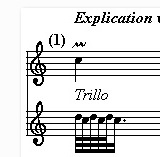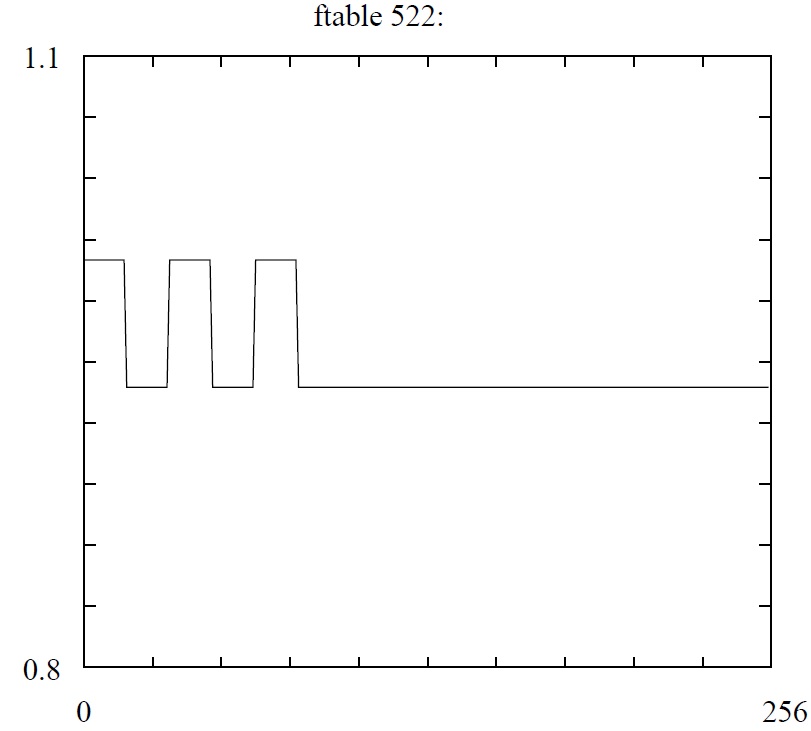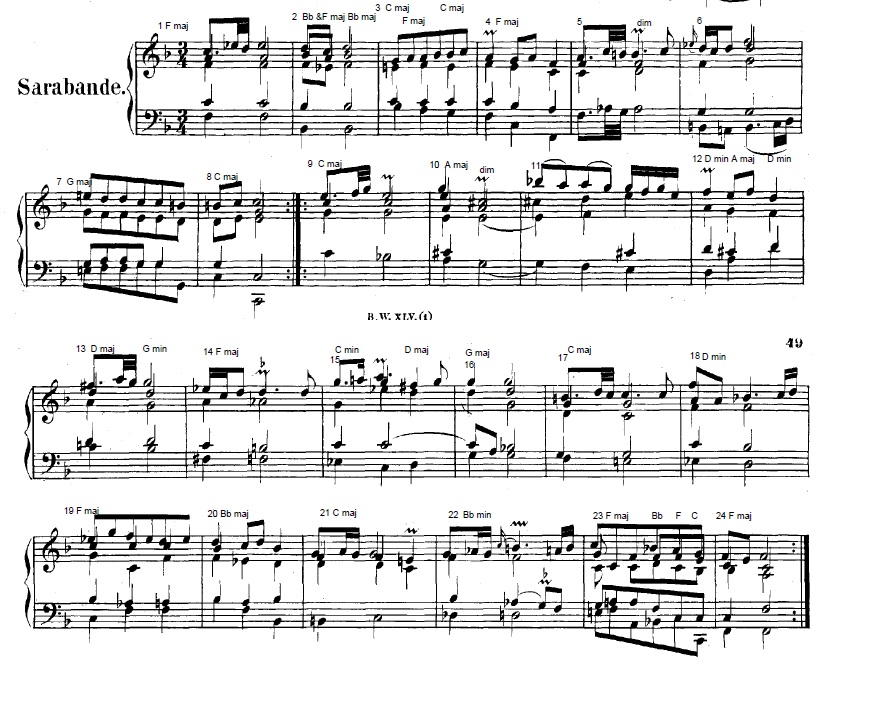I completed the 9th through 24th measures of Sarabande and this version is more or less complete. I may run a few more iterations of the randomizer and see how that changes things. I divided each measure into three, a quarter note per choice. For each quarter not, the preprocessor picks either a straight version, or one with arpeggios of different speeds and directions (up, down, or random), with quick moving pairs of notes turned into a glissando, and whacked out arpeggios far into the upper ranges of an otonality or utonality. For this version, I’ve made it possible to change to a different base otonality or utonality in the middle of a measure, instead of forcing it to stay for a whole measure in one scale. For example, measure 23, the second to the last, foes from F major otonality, to Bb major otonality, to F, then C major otonality. This forces some different Bb’s, some as the 7th overtone of C, some as a 16/9. It just sounds Just to me.
See more information on this piece here, & here.
I made the trills have the same number of steps as those recommended by C.P.E. Bach “trillo”, but through bending instead of discrete notes. Because I can, I guess. Some will find this strange.

Here’s a picture of the pitch modifier used in Csound to match the Bach recommendation.

See measures 4 & 5 for their use.

or download here:
Sarabande #5
Note: There was a bug in my Csound code that affected measure 11. It was an occasional reference to an invalid table. I reran the preprocessor, and it escaped this time without the error.
For geeks, here’s the source code to the preprocessor,
Here’s the Csound score it produced.